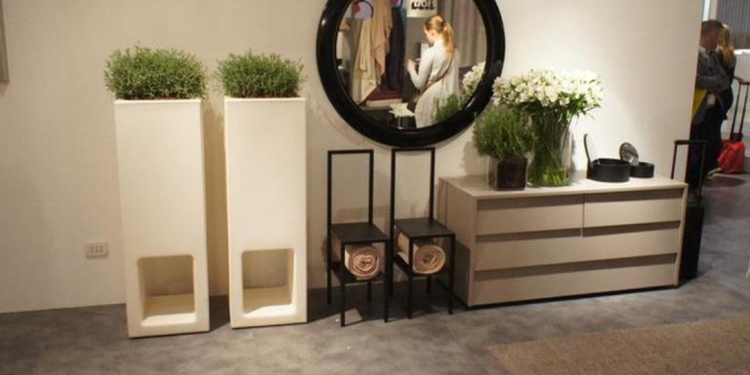Introduction
Kids’ rooms often serve as a hub for creativity, play, and imagination. However, without proper organization, they can quickly become chaotic and cluttered. In this article, we’ll explore effective strategies for organizing kids’ rooms to create a clutter-free play area that fosters creativity and encourages independent play.
Assessing the Current Situation
Evaluating Existing Organization Systems
Take stock of the current organization systems in place in your child’s room. Assess the effectiveness of storage solutions and identify any areas that need improvement.
Identifying Problem Areas and Clutter Hotspots
Identify problem areas and clutter hotspots in the room where toys and other items tend to accumulate. Understanding these areas will help you develop targeted organization strategies.
Decluttering and Sorting Toys
Purging Unused or Broken Toys
Start by decluttering toys, books, and other items. Donate or discard toys that are broken or no longer used to free up space and reduce clutter.
Sorting Toys by Type or Category
Sort toys into categories such as building blocks, dolls, stuffed animals, and art supplies. This will make it easier to organize and locate items when kids want to play.
Creating Storage Solutions
Utilizing Vertical Space with Shelves and Wall Organizers
Maximize space by installing shelves and wall organizers to store toys and books vertically. This not only saves floor space but also keeps items within easy reach for kids.
Investing in Multi-Functional Furniture with Built-In Storage
Consider investing in multi-functional furniture pieces such as beds with built-in storage drawers or ottomans that double as toy chests. These pieces help optimize space and provide additional storage solutions.
Labeling and Categorizing
Using Clear Labels for Easy Identification
Label bins, baskets, and containers with clear, easy-to-read labels. This helps kids identify where toys belong and encourages them to put items back in their designated places.
Categorizing Toys and Items into Clearly Defined Groups
Group similar toys and items together in designated storage bins or baskets. Clearly define categories such as puzzles, dress-up clothes, or art supplies to streamline organization.
Establishing Daily Cleanup Routines
Encouraging Kids to Participate in Cleanup Activities
Involve kids in the organization process by encouraging them to participate in cleanup activities. Make it a fun and interactive experience by turning cleanup into a game or challenge.
Designating Specific Times for Toy Cleanup
Establish specific times for toy cleanup, such as before bedtime or after playtime. Consistency is key to instilling good cleanup habits in children.
Incorporating Fun and Creative Organization Methods
Using Colorful Bins, Baskets, and Containers
Opt for colorful bins, baskets, and containers to add a playful touch to the room’s decor. Choose containers in various shapes and sizes to accommodate different types of toys and items.
Decorating Storage Solutions to Match Kids’ Preferences
Personalize storage solutions to match kids’ preferences and interests. Add decals, stickers, or paint containers in their favorite colors or themes to make organization more engaging.
Creating Zones for Different Activities
Designating Areas for Play, Reading, and Art
Create designated zones within the room for different activities such as play, reading, and art. This helps define spaces and encourages kids to engage in various activities.
Ensuring Each Zone Has Appropriate Storage Solutions
Equip each activity zone with appropriate storage solutions tailored to the types of items used in that area. For example, provide bookshelves in the reading corner and art supply organizers near the art station.
Teaching Organization Skills
Involving Kids in the Organization Process
Teach kids valuable organization skills by involving them in the process from start to finish. Let them help decide how toys should be organized and encourage them to take ownership of their space.
Teaching Them the Importance of Tidying Up
Emphasize the importance of tidying up and taking care of their belongings. Help kids understand that an organized space allows for easier play and helps them find their favorite toys more quickly.
Maintaining Organization
Regularly Assessing and Reorganizing the Space
Regularly assess the organization of the room and make adjustments as needed. As kids grow and interests change, reorganize the space to accommodate their evolving needs.
Encouraging Consistent Cleanup Habits
Encourage consistent cleanup habits by praising kids for their efforts and providing positive reinforcement. Make cleanup a part of their daily routine to maintain a clutter-free play area.
Conclusion
By implementing the strategies outlined in this article, you can transform your child’s room into a clutter-free play area that fosters creativity, imagination, and independent play. With proper organization and storage solutions, you can create an environment where kids can thrive and enjoy their time spent at play.

FAQs After The Conclusion
- How can I get my child to cooperate with cleanup activities?Encourage cooperation by making cleanup fun and engaging. Use timers, music, or rewards to motivate kids to participate in cleanup activities.
- What should I do with toys that my child has outgrown?Donate toys that your child has outgrown to local charities or organizations in need. Alternatively, consider hosting a toy swap with friends or family members.
- How can I prevent toys from becoming cluttered again after cleanup?Encourage kids to put toys back in their designated places after playtime. Use clear labels and designated storage bins to make cleanup easier and more efficient.
- What’s the best way to involve kids in the organization process?Involve kids in decision-making processes such as choosing storage solutions or organizing toys into categories. This helps them feel empowered and invested in maintaining an organized space.
- How often should I assess and reorganize my child’s room?Assess and reorganize your child’s room on a regular basis, such as quarterly or annually. Take cues from changes in your child’s interests and activities to determine when adjustments are needed.
- Can I use color-coding to organize my child’s toys?Yes, color-coding can be a helpful organizational tool for kids. Assign specific colors to different types of toys or categories to make cleanup and organization easier for children to understand.
- What’s the best way to store toys that are not frequently used?Consider storing toys that are not frequently used in labeled bins or containers and placing them in a closet or storage area. Rotate toys periodically to keep playtime fresh and exciting.
- How can I encourage my child to take ownership of their space?Encourage independence and responsibility by involving your child in decision-making processes and giving them autonomy over their space. Praise them for keeping their room organized and tidy.












